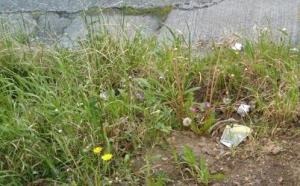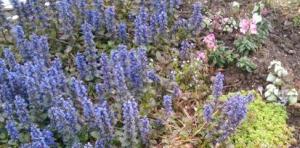 In this year’s Urban Self Reliance program series, running through October at various neighborhood branches, The Library will present two different workshops on wild mushrooms. Edible Mushrooms will focus on resources to introduce you to the world of mushroom gathering. On the Mushroom Trail, presented by author Langdon Cook will discuss the underground economy that has developed in the Northwest around wild mushrooms. Continue reading “Mushrooms and Permaculture”
In this year’s Urban Self Reliance program series, running through October at various neighborhood branches, The Library will present two different workshops on wild mushrooms. Edible Mushrooms will focus on resources to introduce you to the world of mushroom gathering. On the Mushroom Trail, presented by author Langdon Cook will discuss the underground economy that has developed in the Northwest around wild mushrooms. Continue reading “Mushrooms and Permaculture”
Tag: permaculture
What I Made: A Sustainable Landscape

I want to be a good neighbor and maintain the planting strip next to my house. Unfortunately, in my case, this has meant spending hours mowing and removing the invasive blackberry vines, dirty diapers, and broken plastic that birds and less pleasant miscreants insist on depositing there. Grass isn’t terribly interesting, brown grass less so, and brown grass filled with litter least of all. I admit there are times when I have averted my gaze rather than face the problem.
Fortunately, I have now found an intriguing solution: Urban permaculture! I got the idea from a library book called Gaia’s Garden by Toby Hemenway. Permaculture is a philosophy of sustainable design in which you strive to build on the natural features of a landscape to meet the needs of humans, animals and plants in a symbiotic way. When applied to a planting strip, this means that I can replace my boring grass with drought-tolerant native groundcover, trees and shrubs that provide visual interest and animal habitat, and even vegetables! If I do my homework well, the combination of plants I choose could actually improve the health of the soil and facilitate each other’s growth.
So far, I’m about one-third of the way through my planting strip project and

I’ve developed strong arms from pulling up all the weeds. The land closest to the corner is now filled with groundcover plants like wintergreen and kinnikinnick. These produce edible berries and won’t block visibility for cars. Beyond them, I’ve planted blueberries, bulbs and a big transplanted patch of ajuga my friend needed to dig up when she enlarged her flower beds. Books about permaculture and plants of the Pacific Northwest are giving me ideas for the rest.
It’s an ambitious project, I know, but the books I’m reading offer practical, step-by-step advice to make the whole thing manageable and it’s extremely rewarding to think about the shade and habitat I’ll have added to my neighborhood when I’m done!
